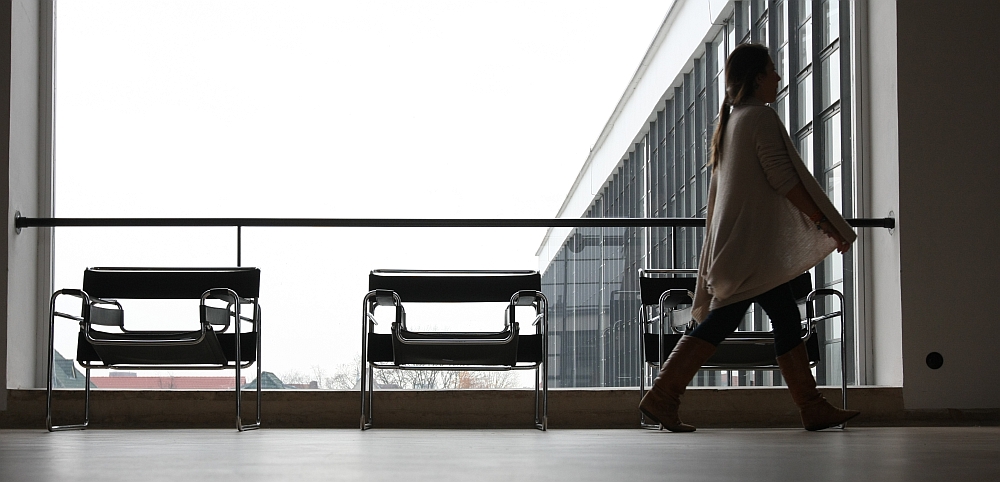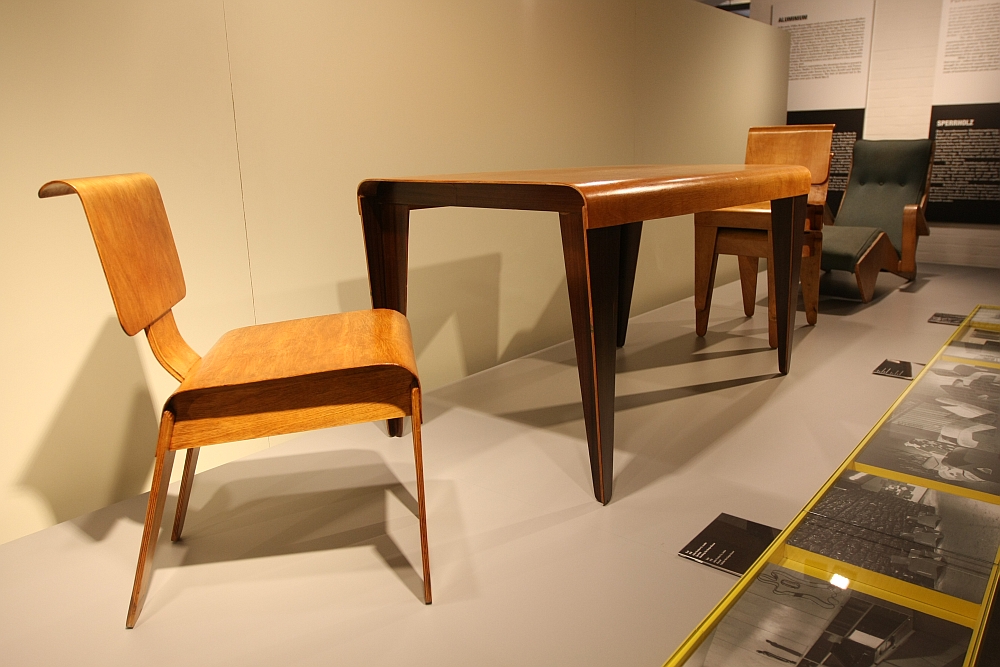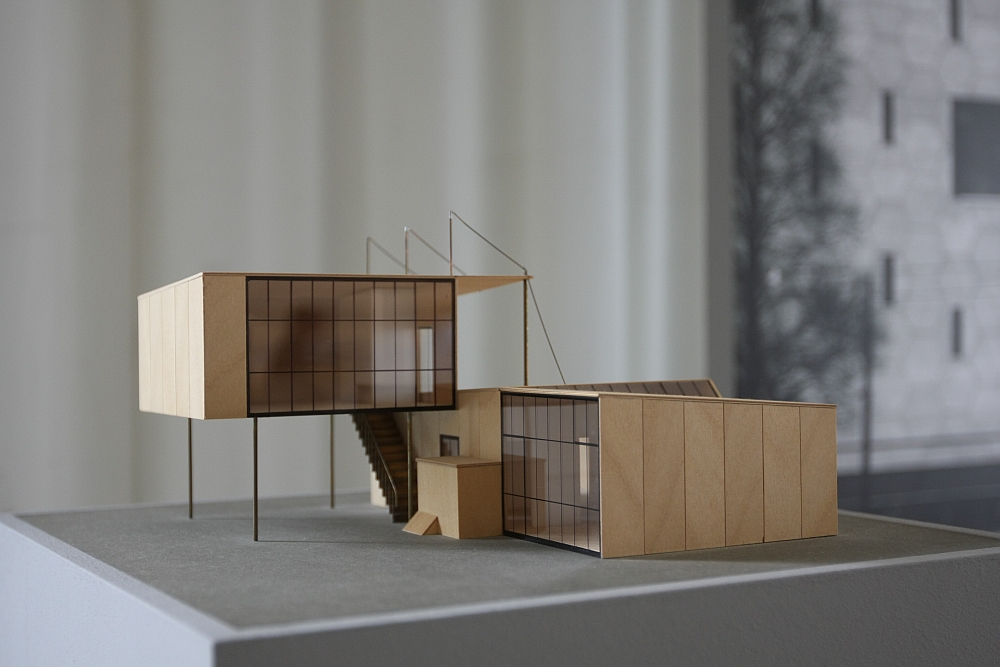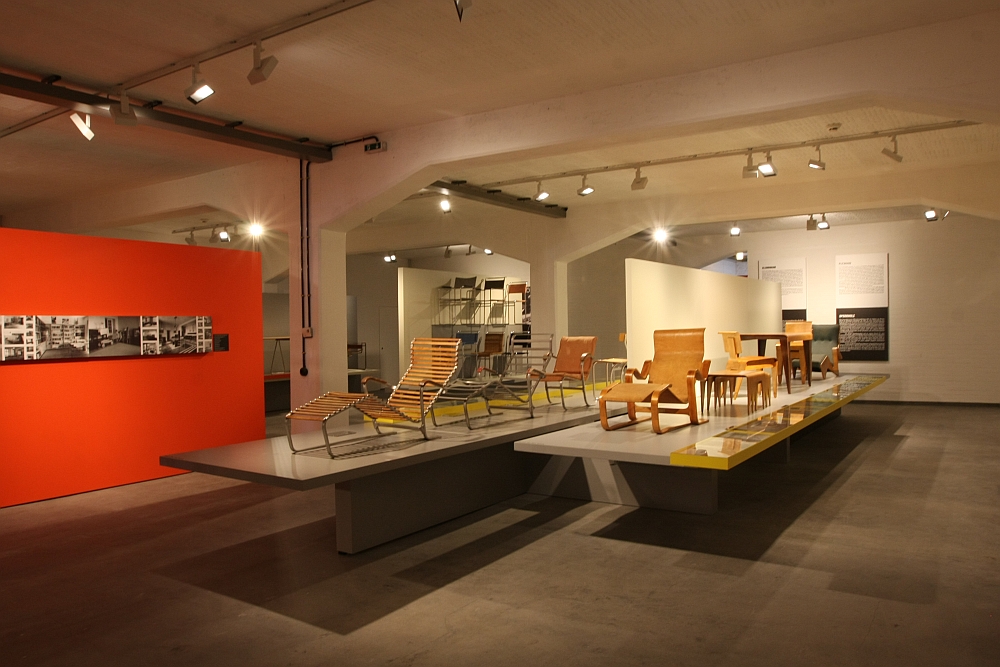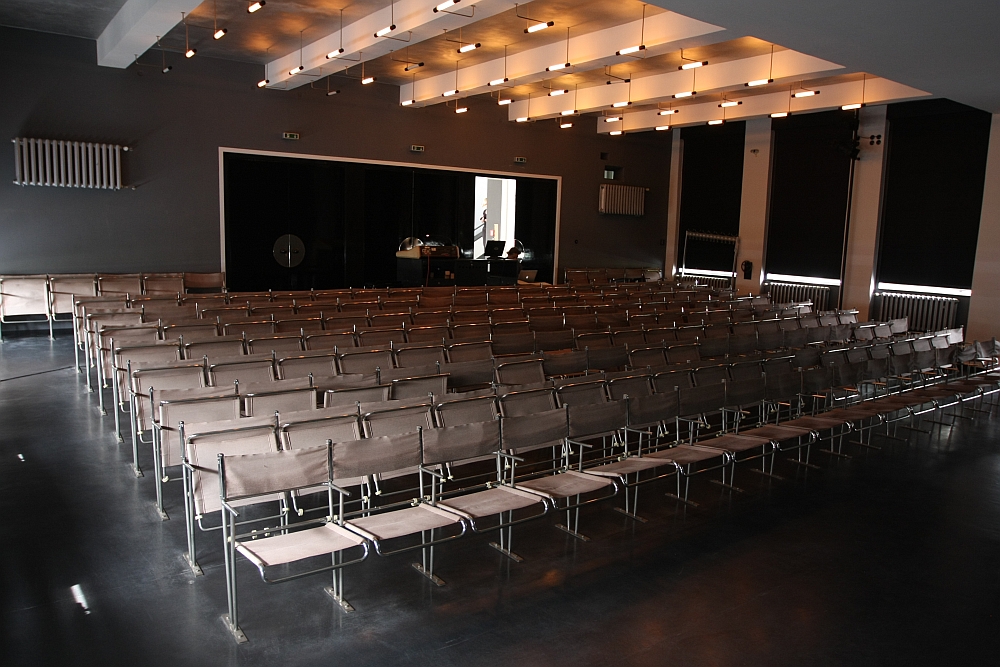Bauhaus Dessau: Marcel Breuer – Design and Architecture
Much as Gerrit Rietveld‘s career is publicly reduced down to the Rood-blauwe stoel, so too is it all to easy to imagine Marcel Breuer spent his days doing nothing more than creating chairs and tables from bent steel tubing.
Indeed start typing the name “Marcel Breuer” into google and the all-knowing, all-seeing algorithm will only offer you “Marcel Breuer Chair”, “Marcel Breuer Wassily Chair” and “Marcel Breuer Biography” as searches.
That the public impression of Marcel Breuer should be so monotone is all the more surprising given that the Breuer biography is without question one of the better known Bauhaus biographies. He is one of the few Bauhäusler about whom a TV quiz show would consider posing a question.
The exhibition “Marcel Breuer – Design and Architecture” currently on show at Bauhaus Dessau not only introduces the visitor to less well known, less well publicly explored, areas of his work, but presents one or the other rarely seen or barely known object from Marcel Breuer’s oeuvre. But for all makes very clear that important as his steel tube work was for 20th century European design, for Breuer himself it was an early and short lived phase of his creativity.
Doing what it says on the tin, “Marcel Breuer – Design and Architecture” is split into two sections. One looking at his design work, the other looking at his… you get the idea.
The design section of the exhibition is arranged chronologically and so starts with Breuer’s initial wood pieces, including the unmistakably de Stijl influenced – and appropriately coloured – Lattenstuhl, and an epic, almost steampunk, dressing table and chair combination he created in 1923 for the Haus am Horn in Weimar.
In the mid-1920s Marcel Breuer then started his ground-breaking experimentation with steel tubing, and naturally the genre is well represented in the exhibition, be it the “Wassily” B3 Club Chair in its various forms, Breuer’s numerous and varied collaborations with Thonet or his cantilever chair designs. What is particularly interesting to see is the construction variations Breuer experimented with in his furniture. For example his B 35 chair for Thonet is shown in a welded and a screwed version; the one obviously being suited to flat pack delivery and a modular furniture family. The other is more aesthetically pleasing.
However, whereas the steel tubing is without question his best known, and most important, epoch, for us the plywood section is by far the more interesting.
On the one hand because it was a material he was more or less forced to work with – the company Isokon having little interest in steel tube furniture and wanting instead the commercially more relevant wood – yet was a material with which he was able to produce some truly wonderful furniture; with the organic form language standing very much in contrast with what the majority of us associate with the name Marcel Breuer. Admittedly one has limited options with moulded plywood, but what Marcel Breuer achieved is truly a joy to behold.
But also because it shows that Breuer had an understanding of the commercial furniture industry that few of his contemporaries could match. His 1936 stacking chair being a particularly powerful example.
In contrast to the chronological design section, the architecture section is thematically divided into “Spaces”, “Houses” and what the curators refer to as “Volumes” – monolithic, almost brutalist, constructions that seem determined to justify and enforce their right to exist through their presence alone.
Each of the sections is explained through models, photos and sketches of representative buildings.
The most interesting display for us is that devoted to the BAMBOS project.
As a thousand Japanese tourist a day can tell you, one of the most important features of Bauhaus Dessau is the Meisterhäuser – a row of villas built specially for the Bauhaus Masters.
Albeit built much to the annoyance of the “Young Masters” such as Breuer, Josef Albers or Herbert Bayer, who found it “antisocial” that while the Masters were given shiny new villas, the Young Masters – who at the time were doing the lion’s share of the teaching – weren’t.
In an act that stands in magnificent juxtaposition to the happy party people Bauhaus currently on show at the Barbican Art Gallery, the Young Masters rebelled against the plan and proposed their own series of experimental, prefabricated houses known colloquially as BAMBOS after those Young Masters for whom they were intended: Breuer, Albers, Meyer, Bayer, Meyer-Ottens and Schmidt.
Initially the plan was rejected, but with Breuer threatening to leave Dessau, Walter Gropius eventually conceded to the project. However, as with so much associated with Bauhaus, fate meant the project was never realised and much of the original documentation has long since vanished.
Consequently the presentation of BAMBOS is limited to a short text and a model of the BAMBOS House Type 1.
That said, the inclusion of BAMBOS is important as it acknowledges that Bauhaus wasn’t a train speeding towards an agreed destination along a unified ideological track, but rather a collection of individuals with opinions that they were prepared to defend. Even if that meant derailing the train.
In a similar vein we feel the exhibition would and could benefit from a little more information on the disquiet caused when Marcel Breuer started selling his steel tube furniture through his own “Standard-Möbel” label, without first clarifying that with the rest of Bauhaus. Or indeed on many of the other moments when Breuer and Bauhaus clashed. Despite the success it unquestionably brought all parties, the relationship wasn’t all sunshine and cocktails.
Regardless of this, for us, omission “Marcel Breuer – Design and Architecture” presents a wonderful, very accessible, overview of the man, his legacy and his place in the story of 20th century design and architecture. One truly gets a feeling for the progression that occurred throughout his career.
But more importantly, and as with “Gerrit Rietveld – The Revolution of Space“, one understands that the public persona is only the introduction to a more complex and creative character. If you like, the invitation to explore further.
Marcel Breuer – Design and Architecture is the perfect chance to do just that and can be viewed at Bauhaus Dessau until October 31st 2012.
Tagged with: Knoll, Marcel Breuer, Thonet, Wassily Chair
